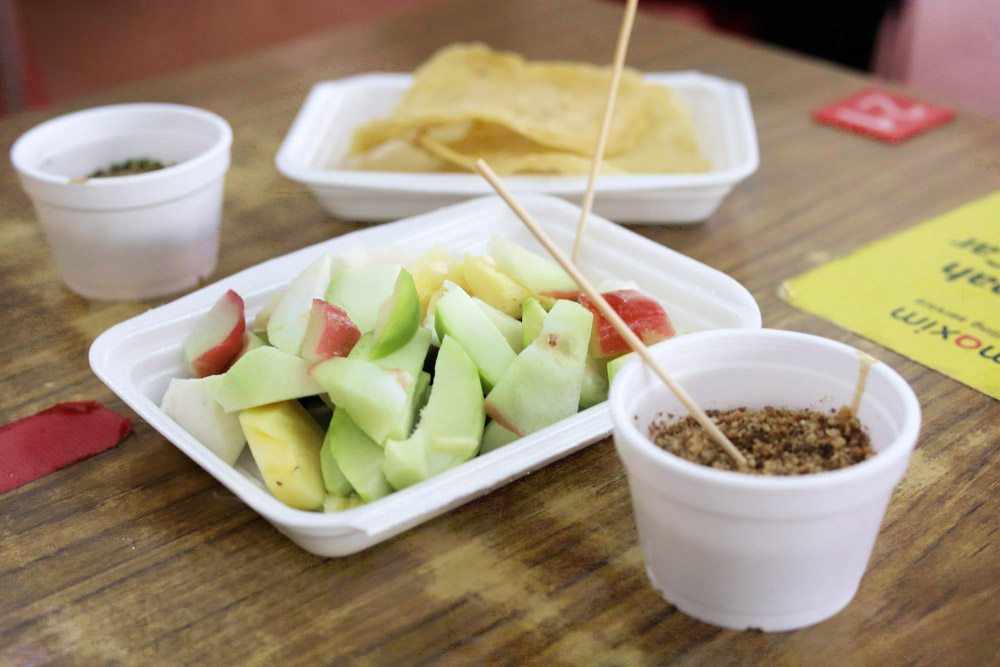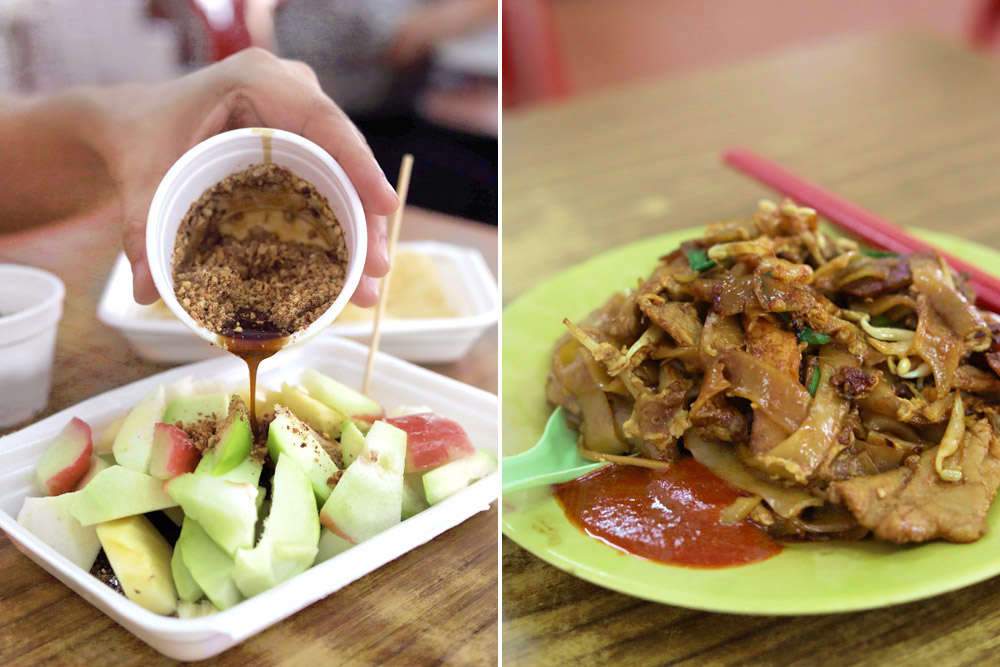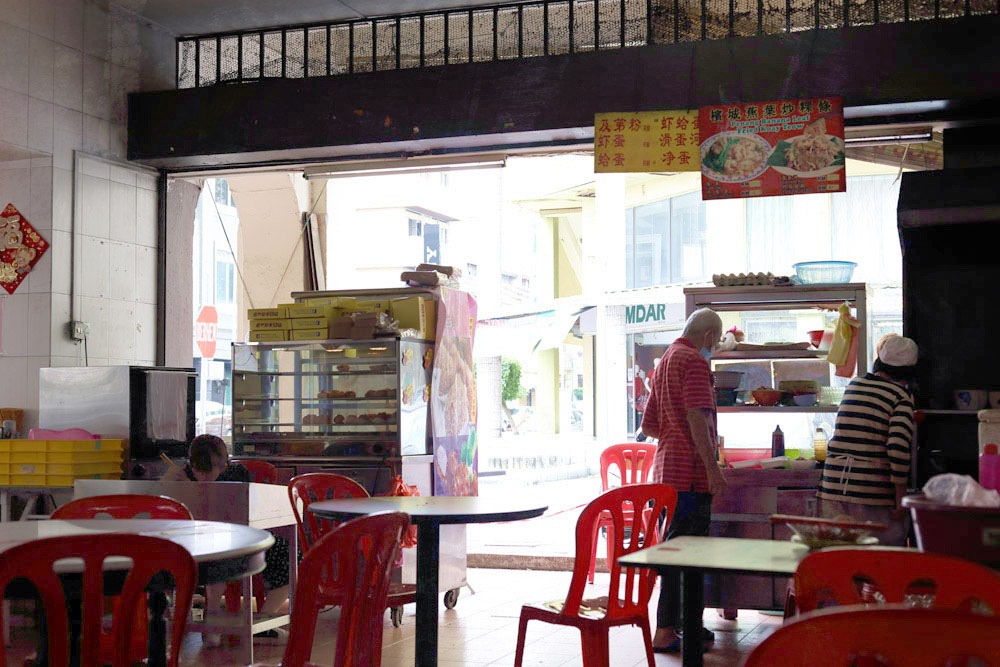IPOH, Nov 16 — Round tables with shiny surfaces smoothed by decades of use. A cacophony of red plastic chairs being pulled hither and thither as customers arrive and depart.
Upright, angular stalls kept mobile thanks to near imperceptible roller wheels beneath. The sound and aroma of something delicious being fried in a well seasoned wok.
It’s a scene from any old coffee shop, a heartwarming one for first timers and a nostalgic one for those who have been coming for years.
When the kopitiam in question has been around since the 1930s, those years are no small number. This is Loke Wooi Kee, one of Ipoh’s many traditional coffee shops, and one we’ve been told we shouldn’t miss out on when we’re in town.
There are the usual suspects you would find at any kopitiam, from chicken rice to curry mee. Local favourites such as Ipoh’s famous kai see hor fun and Teluk Intan style chee cheong fun.
If you’re a fan of apom balik, you can find generously sized portions of these turnover pancakes fondly called dai kao meen in Cantonese.
Yet what draws our attention is what our Ipohan friends made us promise to try: the shop’s trademark hor hee.

Being out-of-towners, we have never heard of hor mee before. What were we expecting, I wonder? A more intoxicating version of lor mee, if you’d pardon the heady pun? Or something that splits the difference between KL style Hokkien mee and the Penang variety?
What arrives at our table, instead, are bowls of what appears to be fishball kway teow soup.
Besides the dense orbs of fish balls (handmade, apparently, given their craggy shape) and the requisite slippery strands of flat rice noodles (or sar hor fun, when you’re in Ipoh), there are slices of fish cake and a hefty garnishing of fried shallots and diced green onion. A simple, nourishing bowl.
We take a sip of the clear broth and our obedience to our Ipohan friends’ instructions is rewarded: a naturally sweet flavour, each drop hinting of ikan bilis and even, possibly, yao yu kon (dried squid).
It’s the taste of invisible umami.
But why the name hor hee? One friend hazards a guess that it is derived from the Teochew word for fish balls, hoo yee, that metamorphosed over the years to a more Cantonese sounding hor hee.
Whatever the reason, it’s a lovely bowl and light enough that we can sample other dishes.

Something tangy and savoury, crisp and refreshing. Let us cleanse our palate with some rojak buah, why not?
Chunks of sweet pineapple and tart kedondong, crunchy raw mango and juicy jambu madu; everything we’d expect from a decent rojak. A shower of crushed, freshly roasted peanuts and chopped cili padi; the appealing shatter of prawn crackers.
What is surprising is how the stall owner serves the unctuous, dark sauce separate from the cut fruit and crackers. Dip and devour at your own pace and pleasure.
Still famished, we look around for something else to order. It’s too late in the day, the ngau lam meen (braised beef brisket noodles) has sold out; no more beef tendon balls or tripe. Diners here know their stuff and come early, unlike hapless tourists (i.e. the two of us, alas).
But the char kway teow stall is still open.

It’s not what we’d associate with Ipoh nor are we more assured by the banner above the stall (”Penang Banana Leaf Fried Koay Teow”). But the other offerings, such as the kap dai fun (stir fried noodles with pork and greens), sound too heavy.
Char kway teow it is, then.
Our decision turns out to be a sound one: There’s nothing earth shaking about the strands of noodles perfumed with wonderful wok hei, the masses of local bean sprouts, slick chives, morsels of egg and shrimp, and some chilli sauce on the side.
But it hit the spot, it did. The few discs of lap cheong (Chinese waxed sausages) completed the picture, though my Penangite friends might well disagree vehemently. Their loss.
Time for something sweet. Perhaps a drink to quench our thirst, particularly if the Ipoh sun happens to be merciless that day.

A traditional choice would be the emerald hued pegaga juice; only the leaves of the pennywort are used, and sweetened with some sugar to counter its herbal, mildly bitter taste. Believed to be cooling, consider this green manna to combat the heat and any heatiness.
My friend Chee Chung, whom we all call Ipoh Boy out of affection and his own love of his hometown, tells us his go-to order at Loke Wooi Kee is their iconic ice cream soda float. Given he has introduced us to tasty treats ranging from crusty roti bakar and creamy white coffee to Momofuku style bao, full of fatty braised pork belly, we certainly paid attention to his recommendation.
He hastened to clarify this menu choice is a very personal one, more out of nostalgia than anything else. Which is understandable; I associate ice cream soda with the crates of bottled drinks one of my uncles used to deliver to our home every Chinese New Year.
To enjoy it at any other time of year, even with a scoop of vanilla ice cream and red syrup, wouldn’t feel right. Food isn’t about taste alone or ticking off items from a checklist. Food is an emotional affair, and we all have our reasons.

Finally, we decide on the crème caramel, that classic custard dessert with its distinctive crown of caramel sauce. We have spotted this delicate, jiggly treat at other coffee shops in Ipoh too; perhaps it’s a local dessert?
Whatever the reason, it makes for a sweet ending to a perfect kopitiam meal: creamy, scented with vanilla (in our imagination, at least, and that’s what matters) and simply fun to eat, every wobbly spoonful of it.
How did we eat so much though? There are only two of us. This goes beyond being hungry; this is gluttony.
Ah but when you are in Ipoh, there’s but one thing for sure: you have to eat, and you have to feast. And so we have.
Kedai Makanan Loke Wooi Kee
26, Jalan Mustapha Al-Bakri, Taman Jubilee, Ipoh
Open daily (except Wed closed) 8am-4:30pm
For more slice-of-life stories, visit lifeforbeginners.com.






















